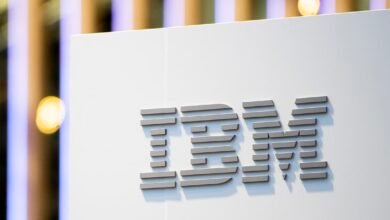Dow scores its highest close in history. Here’s what that means.

The Dow Jones Industrial Average scored both an intraday high and a record close on Wednesday after the Federal Reserve signaled a pivot to rate cuts was likely in 2024.
The Dow
DJIA
went up 512.30 points, or 1.4%, to close at 37,090.24, marking the first time the index has risen above 37,000 intraday, according to Dow Jones Market Data. It traded as high as 37,094.85 on Wednesday.
Bigger picture: Including Wednesday’s record Dow close, it has been 531 trading days since the Dow’s last 1,000-point milestone, the longest time between milestones since 14,000 to 15,000.
The U.S. central bank on Wednesday kept its key policy rate unchanged at the range of 5.25% to 5.5%, a 22-year high, while officials penciled in three rate cuts in 2024, according to its revised dot-plot forecast.
In an afternoon press conference, Fed Chair Jerome Powell said the central bank was “very focused” on not making the mistake of keeping rates restrictive for too long. His comments propelled all three of the major equity benchmarks up at least 1.3% on Wednesday.
The S&P 500 index
SPX
finished up 1.4%, while the Nasdaq Composite Index
COMP
ended 1.4% higher. That marked their biggest daily increases in about a month, according to Dow Jones Market Data.
The Russell 2000 index
RUT
of small-cap stocks outperformed with a 3.5% increase, according to FactSet data.
The stock-market rally means investors are discounting that the Fed has beaten inflation without causing a recession, achieving a so-called “soft-landing,” according to Kathryn Rooney Vera, chief market strategist at StoneX Group.
Powell sounded “remarkably dovish” in his press conference on Wednesday, Rooney Vera said in a call.
With the positive momentum, it appears stocks will also see a “Santa Claus rally,” she said. The Santa Claus rally refers to the stock market’s tendency to push higher in the last five trading sessions of a calendar year and the first two sessions of the next year.
Still, Rooney Vera said concerns remain about whether the rally is sustainable in the next 12 to 18 months, as risks of a recession aren’t eliminated.
Wednesday’s rally is “all about the Fed,” said Peter Cardillo, chief market economist at Spartan Capital Securities, pointing to rate cuts now penciled in for 2024.
“The question is when do the rate cuts begin? That is still the unknown,” Cardillo told MarketWatch. “But what Powell said was sweet to the markets’ ears.”
Fed fund futures traders are now pricing in a 58% likelihood that the Fed will deliver its first rate cut in March 2024, according to CME FedWatch tool.
Cardillo also said he expects the year-end rally in stocks to continue through 2024, but perhaps not to be as “vivacious” as on Wednesday.
“Powell was understandably hesitant to declare victory with regard to avoiding a recession,” Josh Jamner, investment strategy analyst at ClearBridge Investments, wrote in emailed comments. “But the lack of pushback on easing financial conditions as inflation continues its trend lower should be enough to continue to support the Santa Claus rally for the time being,” Jamner said.





